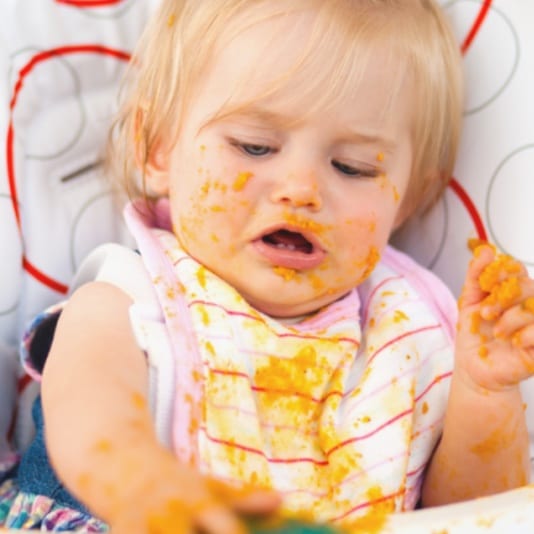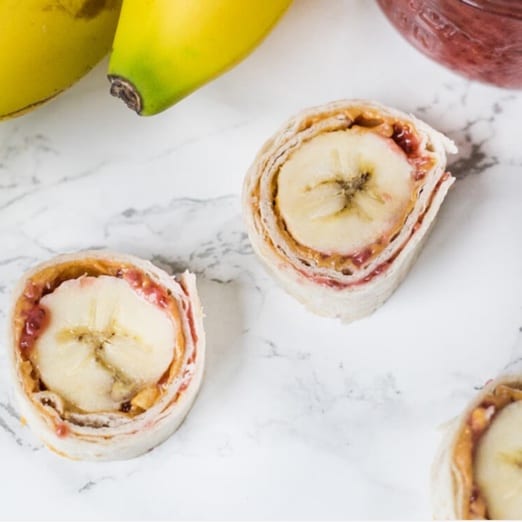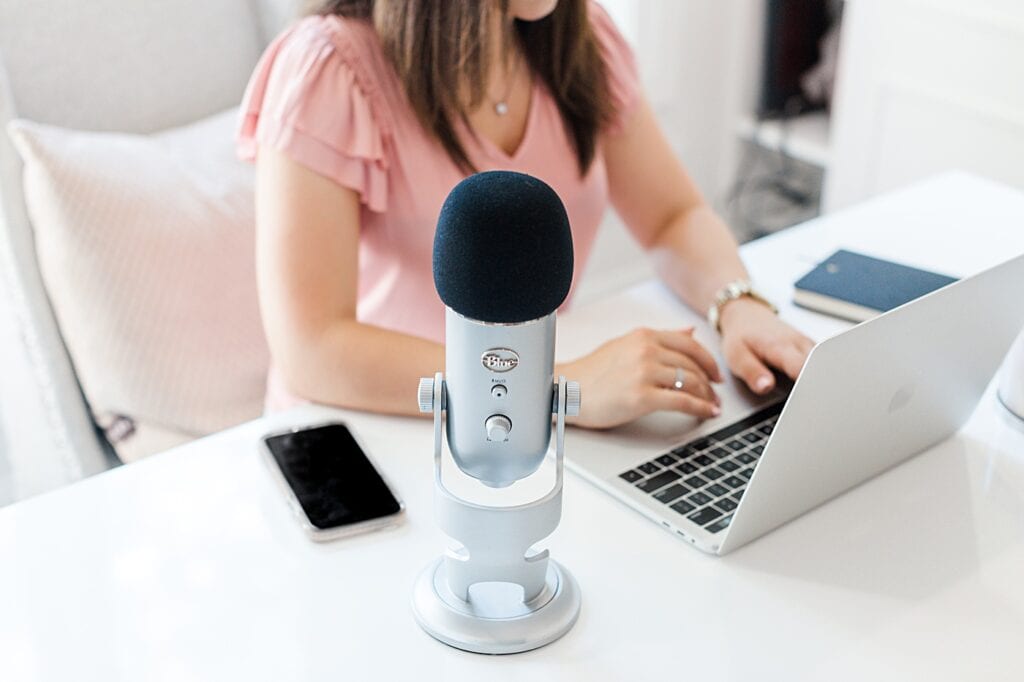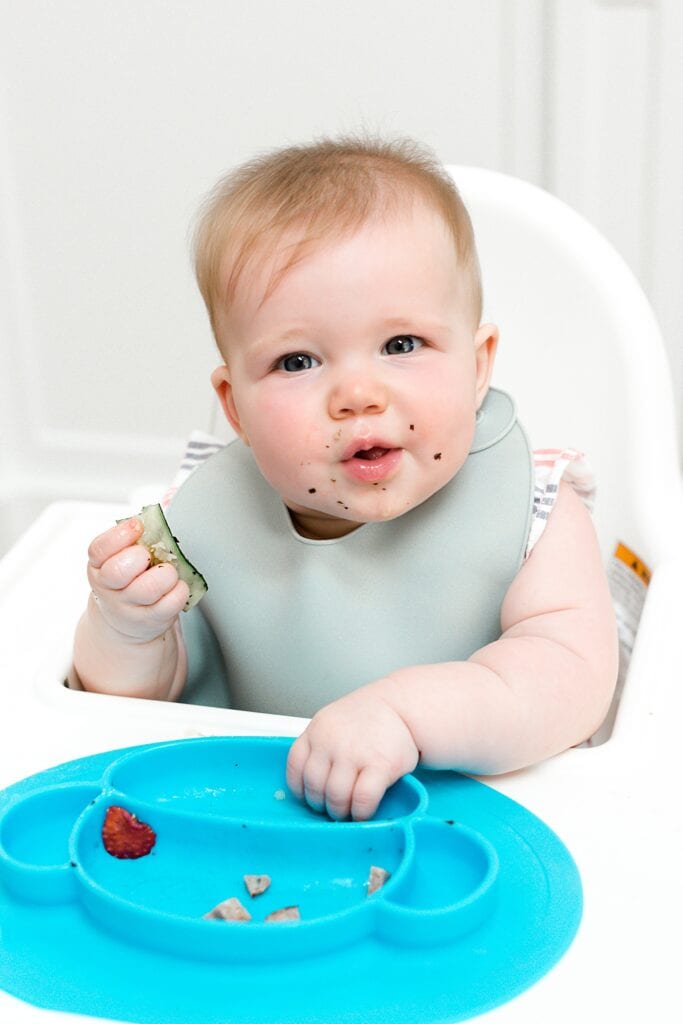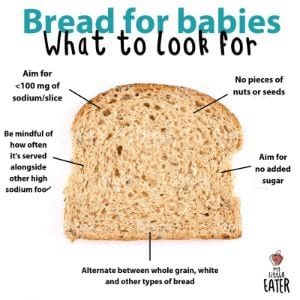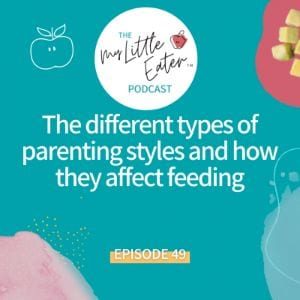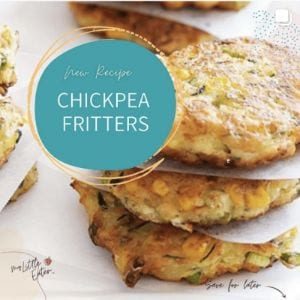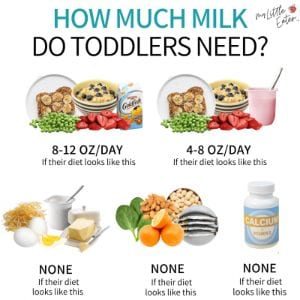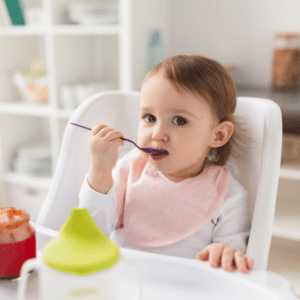
Over the years, I’ve received a lot of questions from parents who are stressed out that, for whatever reason, their baby isn’t able to transition off purees. Maybe they’ve tried, and it ends up with their baby gagging excessively, maybe their baby vomits, maybe their baby just refuses the finger foods and they only want to eat the food that they’re familiar with – which are typically those easy-to-eat, easy-to-swallow purees! Don’t get me wrong, purees can be a great option when you’re starting solids with your baby, but they aren’t needed for long, especially once your baby has a safe swallow.
Basically, it can end up feeling like you’re stuck in this never ending rut of offering purees, trying to branch out to other textures and whole foods, only to be shut down. And the cycle repeats again and again – it’s not fun! If you know exactly what I’m talking about, this blog post is for you! It’s time to get to the bottom of why your baby may have difficulty transitioning to finger foods, or different textures, and what you can do to solve it!
This week on the podcast, I also delved into this topic because, trust me, my biggest mission is to give parents the confidence that they can move on from purees, so this cycle ends before it even begins!
Why it can be difficult transitioning onto finger foods
Gradually advance the purees!
What you want to do is gradually advance the textures that your baby is eating. So, first start off by advancing the purees. If you were serving thin and smooth purees, graduate them to thicker and smooth, then thicker with small lumps (you can just smash most soft foods with the back of a fork to achieve this consistency), then thicker with larger lumps (mash the food just a little bit less or add minced pieces of food mixed in). Then you can just continue on until you’re serving purees that have a thicker and coarser Or, in other words, why your baby might get stuck on purees. There are 4 main reasons, so let’s get started!
Reason #1: Delayed introduction to finger foods
Purees have always been the “traditional” baby food when starting solids, and for babies who do start out on them, things should naturally and gradually progress from one stage to the next. With traditional feeding styles, babies are often on purees until about 9 or 10 months of age, with a very subtle introduction of finger foods (mainly puffs, soft fruit, and diced veggies). The introduction of table food (meaning the same food that the whole family is eating), happens for these babies around 11-12 months of age. This isn’t the same timeline for every baby though. Many start getting introduced to finger foods, and table foods, around 8, 9, or 10 months of age, which is perfectly appropriate, and should be something that healthy, term babies should be capable of doing.
While for some babies this works fine, and they’re able to transition onto table foods without much of a problem. For many babies, what we’re seeing is that, when table food introduction doesn’t happen until closer to the one-year mark, there can be a lot of struggle and push back to transition.
AKA they’ve reached the point at which their baby is stuck on purees. And here’s why.
In general, these babies are being kept on purees for too long and the introduction of finger foods is happening way too late in the game. Did you know that, if purees are used, they’re only really needed for a short period of time before you can move onto finger foods? In fact, after you’ve established your baby can swallow them safely, I recommend a swift transition to finger foods! So, this can mean as little as a day or two on purees, or maybe a few weeks on purees. But really, that traditional timeline where babies were kept on purees for months at a time is so outdated, and is the cause for a lot of the problems that we see in feeding babies today.
When puree feeding, and commercialized baby food became popular, there was a big push to keep babies on purees for as long as possible. So, not only did we see that babies were encouraged to start on purees earlier than required, but they were also encouraged to stay on purees for longer than needed! Babies on purees longer, equals more money in the pockets of those who manufacture baby food! This is totally unnecessary, can be harmful to your baby’s progress, and is really just a part of a big marketing scheme!
Fast forward to now, the new recommendation is to swiftly transition your baby onto finger foods, once you can see that your baby can safely and comfortably handle purees. Finger foods can be introduced way earlier in the game. You can start right at six months of age, or seven months of age, but I wouldn’t delay the introduction of finger foods much past that. Sometimes, babies don’t show interest in self-feeding until about 8 months of age. It’s not as common, but it is possible, especially if they’re not hitting those developmental milestones at the same time as the majority of babies – which is totally fine! Every baby grows at their own individual pace! In these cases, you can wait until then, and continue to feed purees to them in the meantime. But, as soon as you see your baby is willing, and able, to independently eat finger foods, you need to give them the opportunity to do so. There’s this small window of opportunity between 6 and 9 months of age, where babies should get to practice, and experience more textured foods and finger foods. This will help them gain that independence for self feeding, after which it becomes much harder for them to get that confidence, because they’ve gotten used to purees. When this happens, purees become much more of a habit, and they end up not having the opportunity to exercise their oral muscles, and gain those oral motor skills, like munching, chewing, and moving food around in their mouth, at an optimal time. Updated Research very clearly shows that babies who haven’t been introduced to lumpy and textured foods by 9 months of age, may have an increased risk of developing feeding problems and picky eating later on.
If you take away anything from this, it should be how important it is to introduce your baby to finger foods as early as they show they’re ready for it – typically within a month, or two months maximum, after starting purees. Or, it could be as early as their first day or two on purees. So once you see they’ve mastered it, there’s no need to keep them stuck there. Move them along!
Reason#2: infrequently serving finger foods
Even if your baby has been introduced to finger foods earlier, sometimes they get stuck on purees because they haven’t had enough experience with a variety of finger foods. Maybe finger foods are offered once every couple of days, or just on the weekends, or whatever it may be. When they get limited experience with finger foods, or they’re not offered at every meal (or at the very least, 50-60% of the time), babies may not develop the skills they need to eat them, if the time to practice isn’t there.
Reason #3: Quickly resorting to purees as a backup if they initially refuse a finger food
Most of the time what I see happening is, babies have just developed an expectation that they’ll be offered purees if a finger food is initially refused. Sometimes they’ll spit out the finger food, or even a chunkier puree that they’re not used to. Or, they might flat out refuse it, ignore it, or cry and fuss at the sight of it, only stopping when the old faithful puree is brought out. I also hear this happen with babies who prefer puffs, rice rusks, or other soft, very easy to eat food. It’s beyond frustrating for those parents, so they resort to offering purees as a backup once any of these scenarios happen. Unfortunately, this can keep them stuck in that same cycle I mentioned earlier, with no end in sight!
Reason #4: Sticking to the same, very soft and very easy to mush finger foods, instead of branching out to different textures
Another reason that babies might have a hard time transitioning onto finger foods, is because when they’ve been offered finger foods, they’re typically ultra soft, or really easily melt in their mouth – think things like puffs and rice rusks, again. Other times, parents will start their babies off on bananas, avocados, or sweet potatoes, and then assume that they’ve done what is needed to “introduce finger foods early”. The thing is, our babies need the experience with a variety of textures, not just ultra soft or meltable textures. And this is because it will allow them to continually advance by challenging them with more difficult to chew foods, so that they continue to develop their eating skills, and don’t give up once something doesn’t easily dissolve, or mash, in their mouth.
So, how can we help them out of the rut?
Gradually advance the purees!
What you want to do is gradually advance the textures that your baby is eating. So, first start off by advancing the purees. If you were serving thin and smooth purees, graduate them to thicker and smooth, then thicker with small lumps (you can just smash most soft foods with the back of a fork to achieve this consistency), then thicker with larger lumps (mash the food just a little bit less or add minced pieces of food mixed in). Then you can just continue on until you’re serving purees that have a thicker and coarser texture. Watch for the gagging, see how they react and recover, build your confidence, and theirs, and keep moving forward!
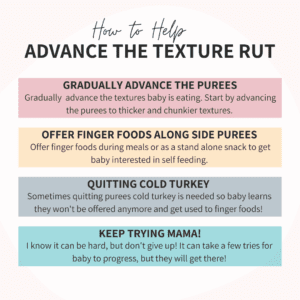
Offer finger foods alongside purees
I also recommend serving finger foods alongside the purees at mealtimes, and as a stand alone snack, especially if they’re under one year of age and are still getting breast milk or formula to supply them with the calories they need (see my sample feeding schedules for balancing milk and solids). Start with rice rusks, or finger shaped puffs (like Baby Gourmet carrot sticks or Puffworks), but remember – don’t get stuck there! Use these to get them interested in self-feeding. Once they start bringing ultra soft and dissolvable foods like these to their mouths with precision, and start making an up-and-down chewing motion, you can move them onto something like a soft pancake, or toast moistened with a topping. Then continue to progress them from there!
I’ve developed something called the Texture Timeline™ that is exclusive to My Little Eater™, and that’s found inside of my Baby Led Feeding online course, that walks you through each of the stages and textures, in order of difficulty, and includes suggested timelines to spend on each texture. This makes it easy for parents that aren’t sure how to, or are afraid to, progress in textures, or don’t know what readiness signs to look for that indicate that their baby is ready to move on. I give you tons of ideas for different foods that fit within each phase of the Texture Timeline™, so that you don’t have to guess what to offer, and when. This way, you can make sure that your baby has hit every major texture out there, and gets the experience that they need, in a timely manner!
Quitting purees cold turkey
Now, sometimes the gradual approach of offering finger foods alongside of purees will work, but sometimes going cold turkey with the purees is required so that your baby learns that purees won’t be offered anymore, that you’ve moved on, and that they’re going to have to start to work a little bit harder to chew the finger foods you offer (and accept them eventually). The first couple of days may be rough, because your baby could end up refusing foods in general, making you worry that they won’t be getting all the calories they need. The thing to remember is that breastmilk, or formula, is still there to provide them with the calories that they may be missing from solid foods. Hopefully, this will help you stress less as they fight the transition over the next few days (maybe even a week). Offer them breastmilk, or formula, about half an hour to 45 minutes after the meal has ended. This way, you know that they won’t end up super hungry, and they’re still getting the nutrition they need to grow, but you’ve also got out of the habit of offering purees as a backup. And, alas, you can finally start to get out of this cycle, moving forward once and for all!
A note on gagging!
One thing I want to make sure you understand, is that you can definitely expect your baby to gag more once they’re offered more advanced textures. Gagging is totally normal, is expected, and is a natural response to something new or different being in their mouth. Their gag reflex is a protective mechanism that is there as a helping hand as they learn their new skills! It doesn’t mean your baby is choking. It doesn’t mean that they’re in danger. It just means that they’re going to take some time to figure out what to do with that food, with those lumps, and with those new textures that they’re experiencing.
As they start to get more practice with finger foods, they’ll start to figure out how to manipulate those new foods in their mouth, how to chew them, and how to bring them to the back of their tongue for swallowing. That’s when you’ll start to see that the gagging finally starts to decrease. It’s just one of those things that you can’t avoid and that you need to let happen, in order to move forward!
When it does start to happen, just be there for them. Coach them through the gag, tell them: “You can do it! You’re doing a great job!”, and generally try to keep the atmosphere positive and light-hearted. Don’t let your baby feel like there’s something wrong when they start to gag, or like there’s a need to panic, because then they may start to turn away from those foods all together.
It’s worth mentioning here, that if your baby gags and then continues to go on with the meal, maybe goes for another piece of food, maybe just wants to pause, but is still smiling and generally content, then everything is good, and you can keep challenging them with those textures! However, in some cases, especially kids who have feeding difficulties and more severe challenges, they may actually vomit excessively, or gag excessively. By this, I mean it is happening to the point that mealtimes can’t be continued, and become dreaded. In these instances, you should definitely talk to your doctor, and ask for a referral for a feeding evaluation, just to rule out any further feeding, or medical problems.
So there you have it! A general plan for how to get your baby off of purees, progressing onto finger foods, and eating the same meals as the entire family.
If you need help figuring out how to serve different finger foods in order to progress your baby on in textures, what gagging and choking looks like, how to set your baby up for positive mealtimes, how to raise them to be adventurous eaters (and so much more), definitely check out my Baby Led Feeding online course! There’s so much to learn, and I hold your hand every step of the way. Join thousands of parents who’ve already made the leap to feed in a completely baby led way! All these helpful tips are also up on the podcast this week, so check that out if you prefer to listen to me chat about the details.


